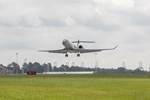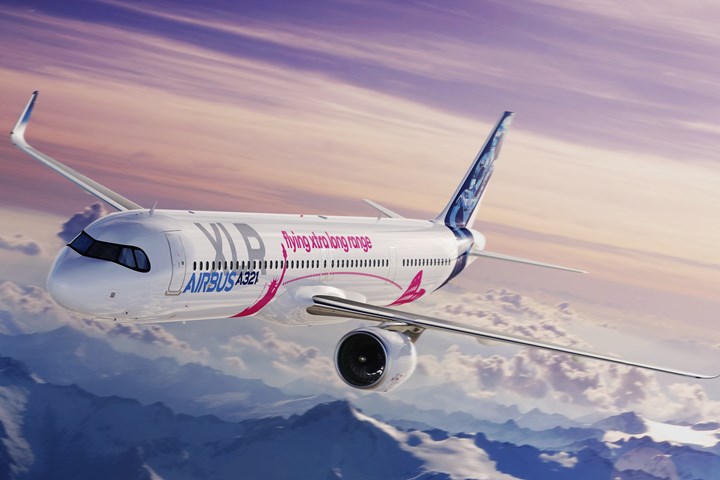Airbus increases A320 program rate with new A321XLR hangar
The Hamburg-based equipment installation hangar for the aircraft’s rear fuselage offers enhanced modernization and digitalization to meet rates of 75/year in 2026.
Airbus (Toulouse, France) is advancing its industrial system and expanding ramp-up capacity with a new automated A321XLR equipping hangar opened in Hamburg, Germany. With this, Airbus continues its modernization and digitalization of its industrial system and expands its capacity for the rate ramp up in the A320 program to 75 in 2026.
“Airbus’ Hamburg site plays a significant role in the development and production of the A321XLR. We are now expanding our capacity to manufacture A321 fuselages and making an important contribution to supporting our ramp up. At the same time we are reaffirming the importance of Hamburg for Airbus,” André Walter, head of Airbus commercial aircraft production in Germany. “The design of the building reflects the latest standards in production and sustainability.”
In the new 9,600-square-foot equipment installation hangar, all of the components of the rear fuselages of the A321XLR aircraft — also built in Hamburg — will be installed and mounted. The hangar is equipped with a full range of state-of-the-art technologies for operations and manufacturing, such as automated logistics, fully digital systems and test stations that can output the status of each fuselage section (in terms of logistics and resources) at any time. The almost 24-meter-long fuselage sections are equipped with all electrical and mechanical systems, as well as other elements such as windows, floor panels or external antennas, on an automated “pulse line” consisting of eight stations. Each fuselage section is extensively tested directly after the installation of the systems. The fuselage sections are then transferred to the final assembly line in Hamburg.
The stations in the new hangar were planned in close consultation with the employees to create both an efficient production flow and an ergonomically optimized and modern working environment. In addition, the interior design also focused on ensuring optimal conditions for cooperation between the employees in production and the supporting functions.
The A321XLR is said to be the next evolutionary step of the A320neo, in response to market demands for more range and payload. It will deliver an “Xtra-long” range of up to 4,700 nautical miles — 15% more range than the A321LR — and with 30% lower fuel burn per seat compared with previous-generation competitor aircraft, as well as reduced NOx emissions and noise. The A321XLR currently has nearly 570 orders from 27 customers worldwide. Entry into service is planned for the second quarter of 2024.
Also read, “Airbus A321XLR takes off for the first time.”
Related Content
-
Plant tour: Collins Aerospace, Riverside, Calif., U.S. and Almere, Netherlands
Composite Tier 1’s long history, acquisition of stamped parts pioneer Dutch Thermoplastic Components, advances roadmap for growth in thermoplastic composite parts.
-
“Structured air” TPS safeguards composite structures
Powered by an 85% air/15% pure polyimide aerogel, Blueshift’s novel material system protects structures during transient thermal events from -200°C to beyond 2400°C for rockets, battery boxes and more.
-
Otto Aviation launches Phantom 3500 business jet with all-composite airframe from Leonardo
Promising 60% less fuel burn and 90% less emissions using SAF, the super-laminar flow design with windowless fuselage will be built using RTM in Florida facility with certification slated for 2030.

















